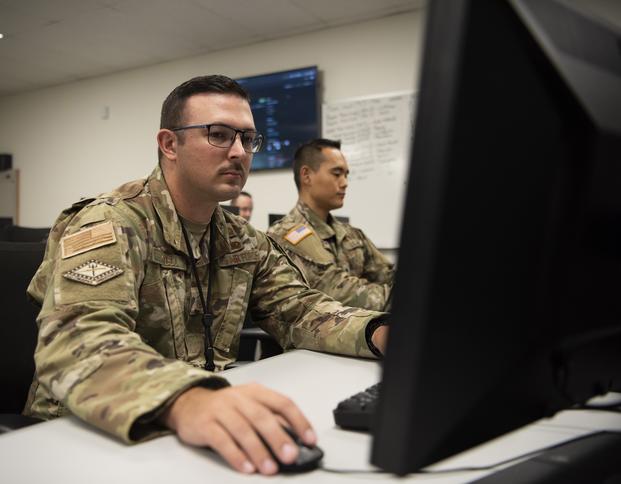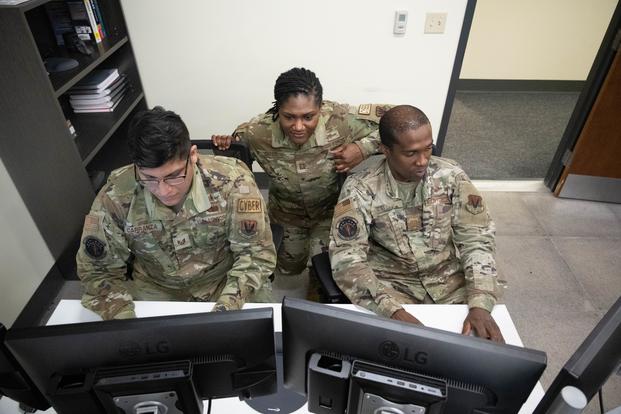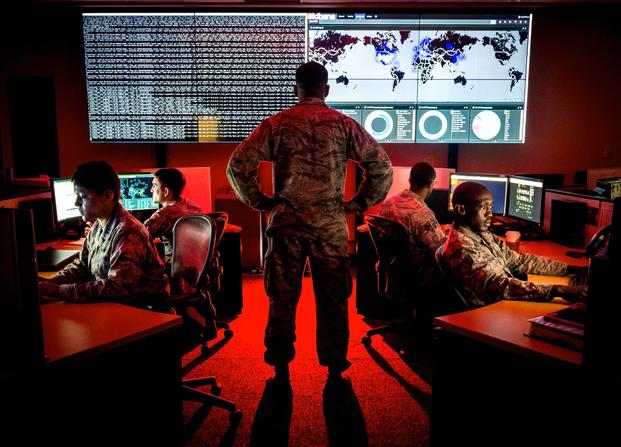Legislators in the House and Senate are investigating methods to expand the powers of the National Guard in cyber operations and communication resilience as they move on with the FY 2026 National Defense Authorization Act (NDAA). The proposed clauses would place National Guard units at the forefront of safeguarding crucial infrastructure, enhancing systems for communication, and installing modern technologies for disaster response. However, there are still significant differences about whether Washington deserves to preserve state control or its command of the digital response mission.
Rising Stakes: Cyber, Comms, and Guard Missions
The Department of War (DOW) is required to look into the current role of the Guard in reacting to cyber-attacks as part of the suggested NDAA amendments in the House. The objective is to examine methods of expanding federal coordination while maintaining the powers of governors to use Guard Units for state missions.
Summaries from Senate committees, however, underscore the significance of examining how the DOW and Guard assist the Department of Homeland Security (DHS), specifically in regard to nationwide communications resilience.
The disagreement is centered around the question of authority: should the cyber and communications Guard forces remain under state command or fall under federal direction? Stronger federal coordination advocates claim cyber-attacks, which include infrastructure breaches and ransomware, transcend state boundaries and require an organized national response. However, critics argue that if the authority of the state is eroded, local emergencies might be forced to wait for a green light from Washington.
According to recent reports, legislators are also considering more extensive structural reforms within DOW, including establishing a joint Task Force-Cyber to strengthen digital operations involving civilian and military agencies.

Tension from the Ground Up: Governors Push Back
Governors who come from the most prominent, high-tech, or disaster-prone states, including New York, Texas, and California, are urging Congress to safeguard the autonomy of the state. They claim that National Guard Units must be prepared to immediately change course without seeking approval from the federal government.
“If a cyberattack shuts down our power grid, we can’t wait on D.C. to release approval,” one governor said on condition of anonymity.
State officials are worried that a greater federal footprint in Guard communications and cyber operations could make it hard for them to respond quickly to catastrophic incidents, consisting of wildfires, hurricanes, and public health problems.
The source of the disagreement is the long-standing dual organization of the Guard. According to Title 32, the Guard troops are federally trained and funded but are state-controlled. The recent DOW “readiness directives”, however, are regarded as consistently redirecting priorities in favor of federal operations at the cost of local responsiveness by some governors.
Clashing Jurisdictions: DHS, DOW, and the Guard Bureau
The continuous conflict between agencies over who should be put in charge of responding to domestic cyber incidents adds complexity. DHS considers itself the main agency in charge of safeguarding the infrastructure and cyber resilience of the nation. To scale defense all over the states, DOW regards the Guard as an important asset, specifically through U.S. Cyber Command.
The National Guard Bureau is caught between them, with the responsibility to handle political pressure from either side while maintaining its dual state and federal duties. Within the Guard, some officials are privately worried that greater engagement of federal might blur command authority and erode state agility.
Proposals to extend Guard obligations in communications resilience, which include reestablishment of networks during natural incidents, have raised the same concerns: should uniform federal norms regulate how states rebuild or should local direction carry the day?
Legislative Levers: What’s in Play for FY 2026
Major NDAA provisions currently under consideration include:
- Cyber Incident Study Amendment (House): The bill, originally sponsored by Rep. Biggs (R-SC), orders DOW to evaluate the role of Guards in cyber response and ensure a balance of engagement between state and federal.
- DHS Support Cost Review (Senate): The Comptroller General is requested by the Senate version to analyze whether DOW has been properly tracking its expenditures while assisting DHS missions since FY 2025.
- Joint Task Force-Cyber: For better coordination of cyber activities and command assignments, legislators are thinking about restructuring the digital mission architecture of DOW.
- NDAA Passage: Amid continuing concerns about larger defense funding deficits, the Senate enacted its bill 77-20
These debates extend beyond communications and cyber to encompass deeper issues of allocation of resources, national readiness, and the enduring equilibrium between state autonomy and federal authority.

Key Fault Lines to Watch
- Federal vs. State Control
Will states keep primary activation autonomy over Guard cyber operations, or will they be centralized under federal control?
- Speed vs. Oversight
Responses across states may be accelerated by centralized governance; however, responses tailored to local conditions might be hindered by overreach.
- Resource Allocation
States with good infrastructure and high-tech capacity may be favored by the expansion of Guard cyber and communications, therefore, risking an imbalance in states with fewer resources.
- Interagency Conflict
The Guard Bureau, DHS, and DOW all have interests in governance of how to react to digital disasters.
U.S. Cyber Command operators participated in Cyber Guard 25-2 exercise on June 3, 2025, at Fort George G. Meade, MD. The exercise, in coordination with the Joint Staff, simulates scenarios that test response protocols and defensive and offensive techniques across geographic areas of responsibility (Photo credit: U.S. Cyber Command).
What’s Next: From Hearing to Policy
In the coming months, a hearing will be held by the House and Senate Armed Services Committees where NGAUS, DHS, governors, cyber specialists, and Guard leadership will testify. Particularly, the National Guard Association of the United States (NGAUS) may support modernization while advocating to retain the flexibility of states.
Upon the finalization of the FY 2026 NDAA, Congress will face essential choices:
- How much power should states retain
- How funding for costs, training, and infrastructure updates will be done
- Which agency (DHS, DOW, Guard Bureau) will have final control authority for cybercrime response
- Which operations to federalize
The manner in which America defends against network attacks and restores connectivity after disasters could be altered if Congress provides the Guard extensive cyber and communication responsibilities. However, friction between the Pentagon and governors may likely become worse if state views are not appreciated.















